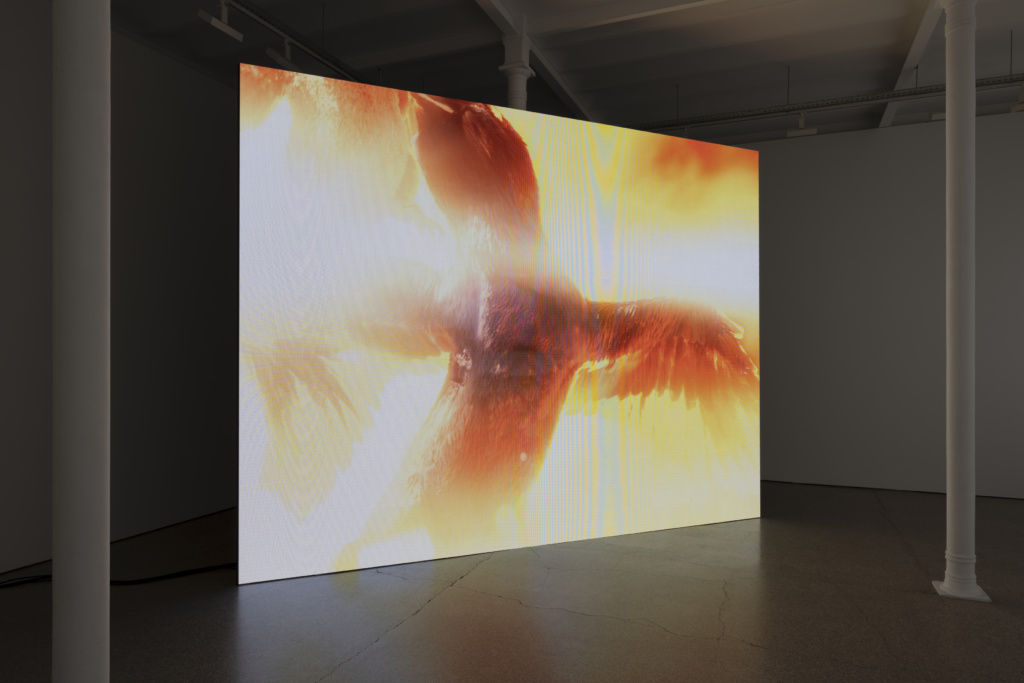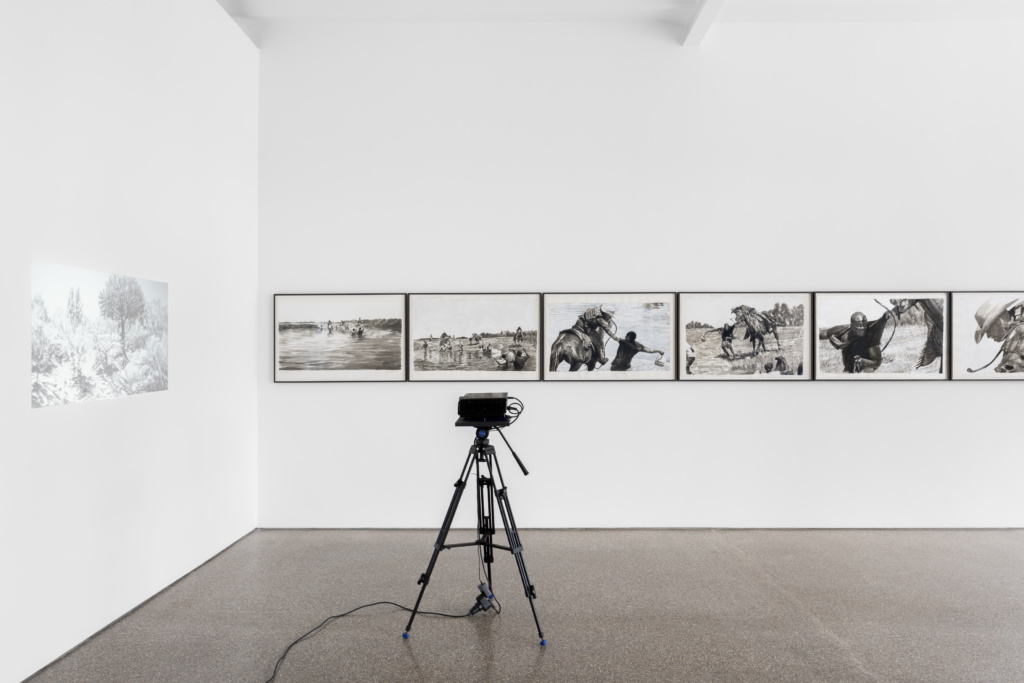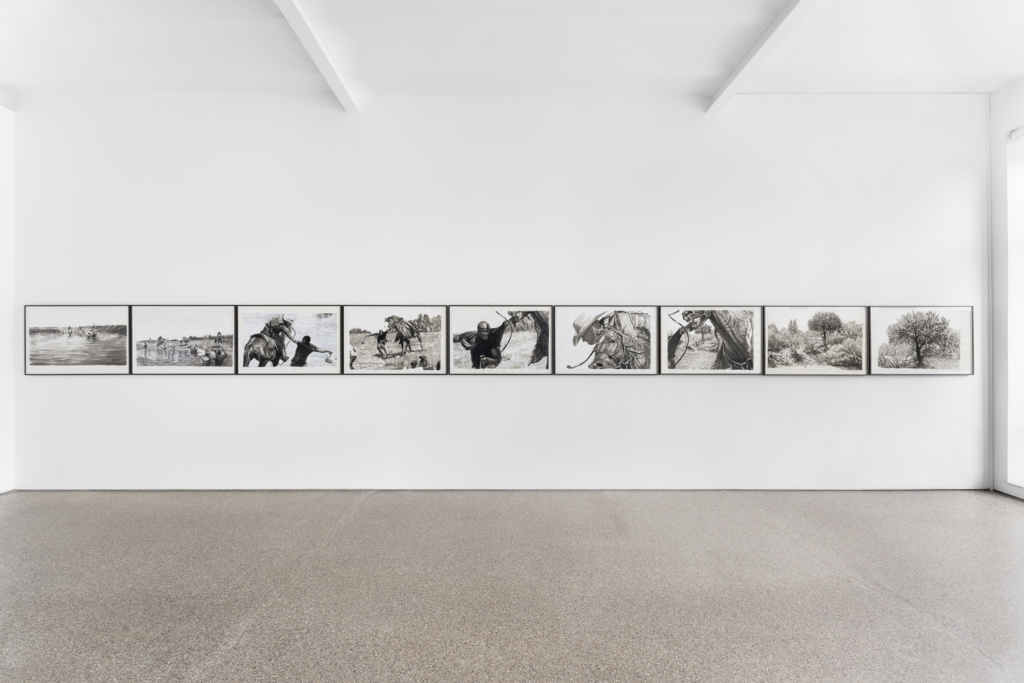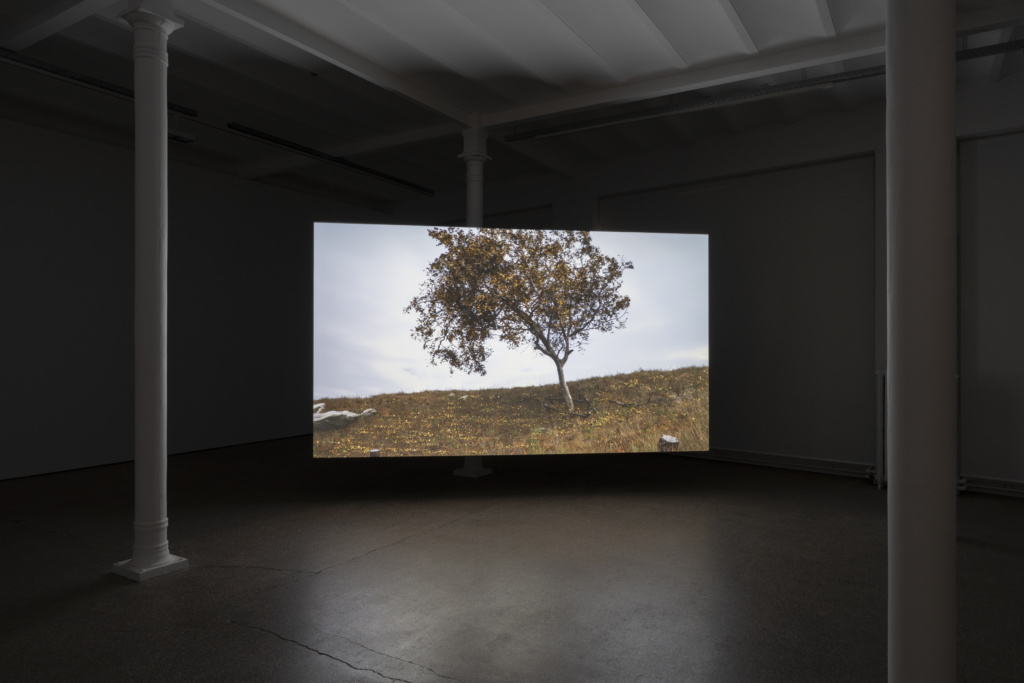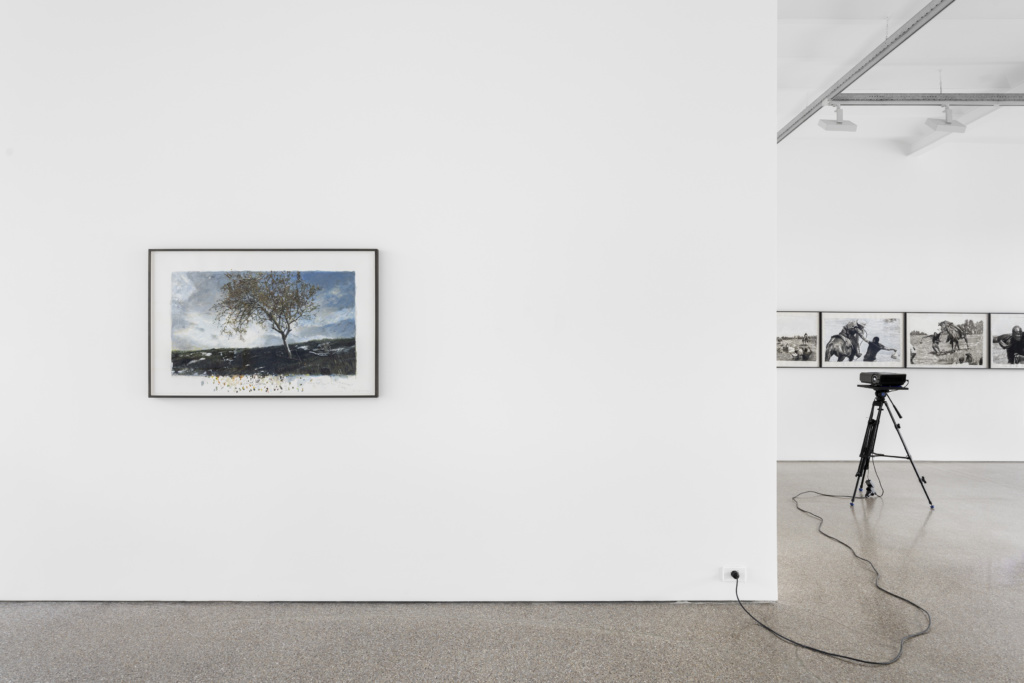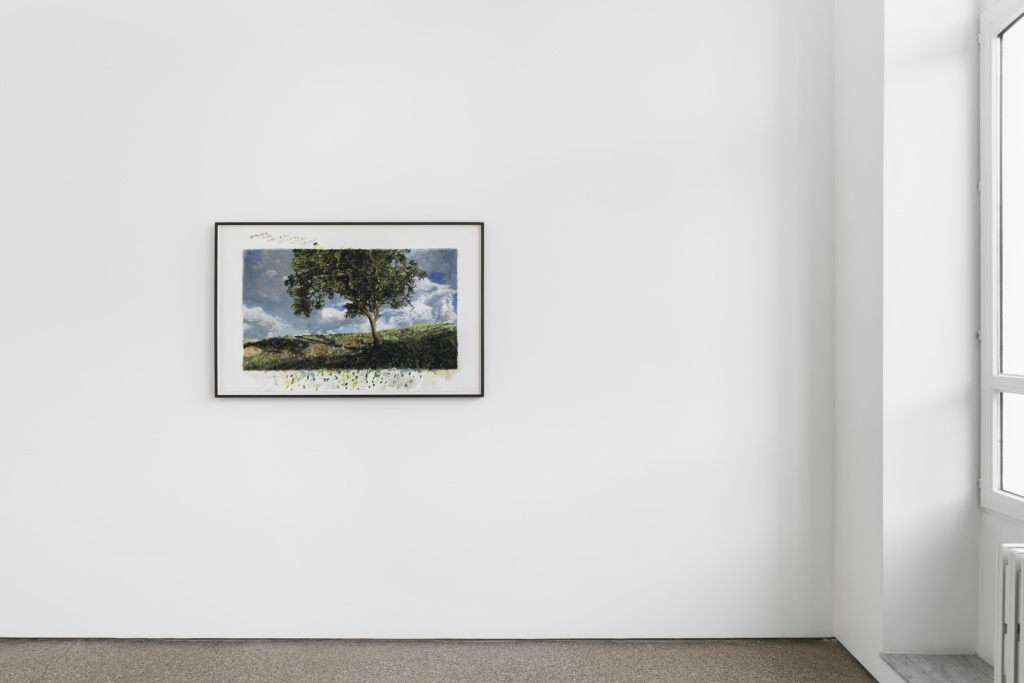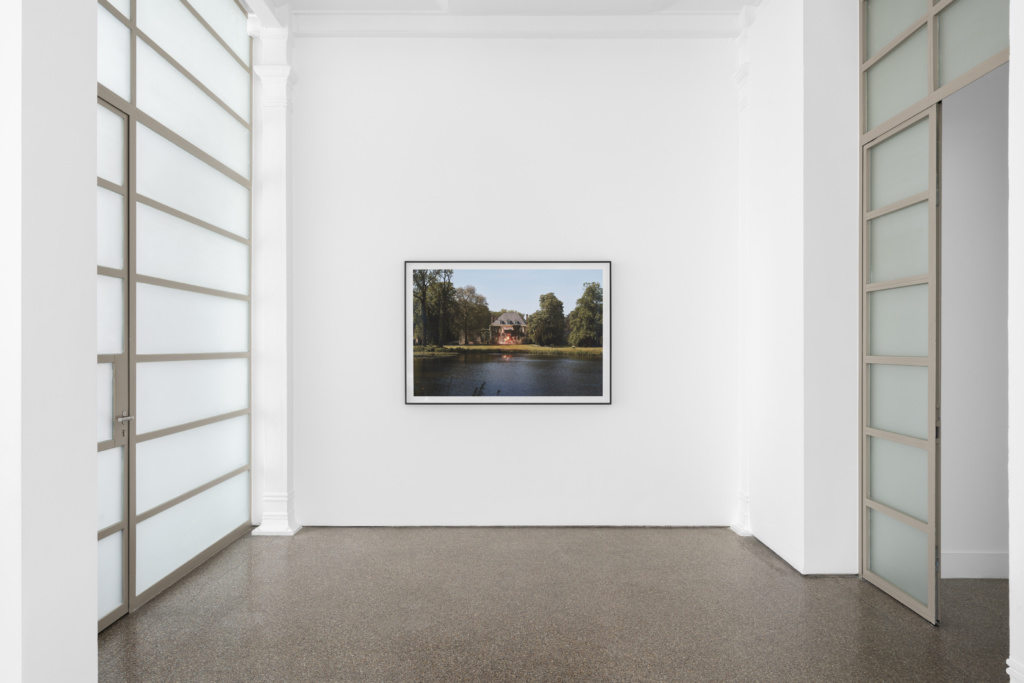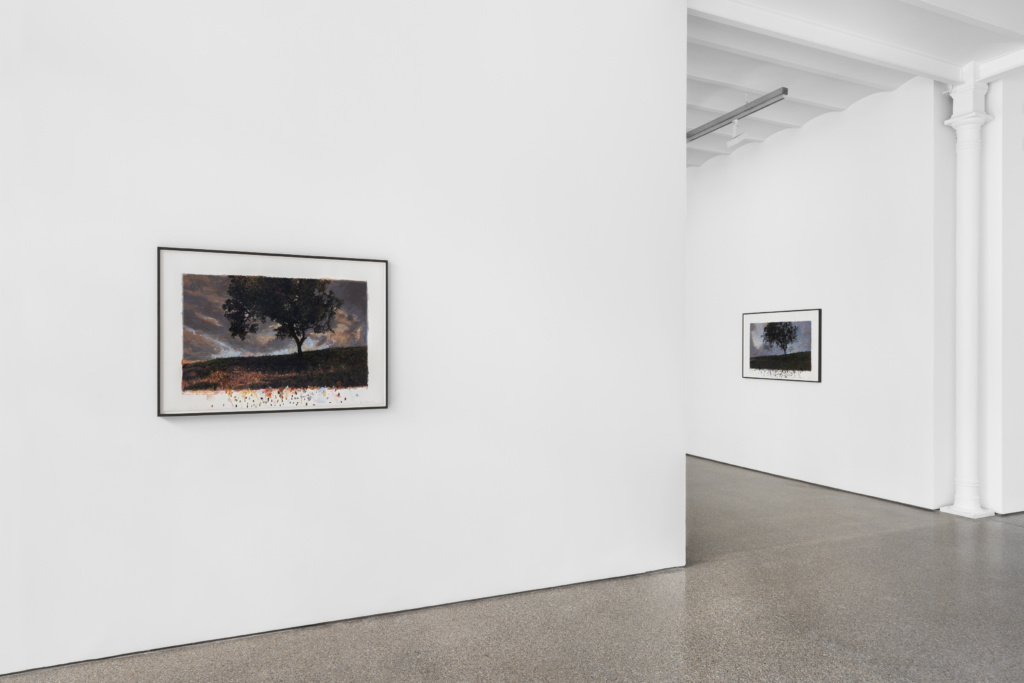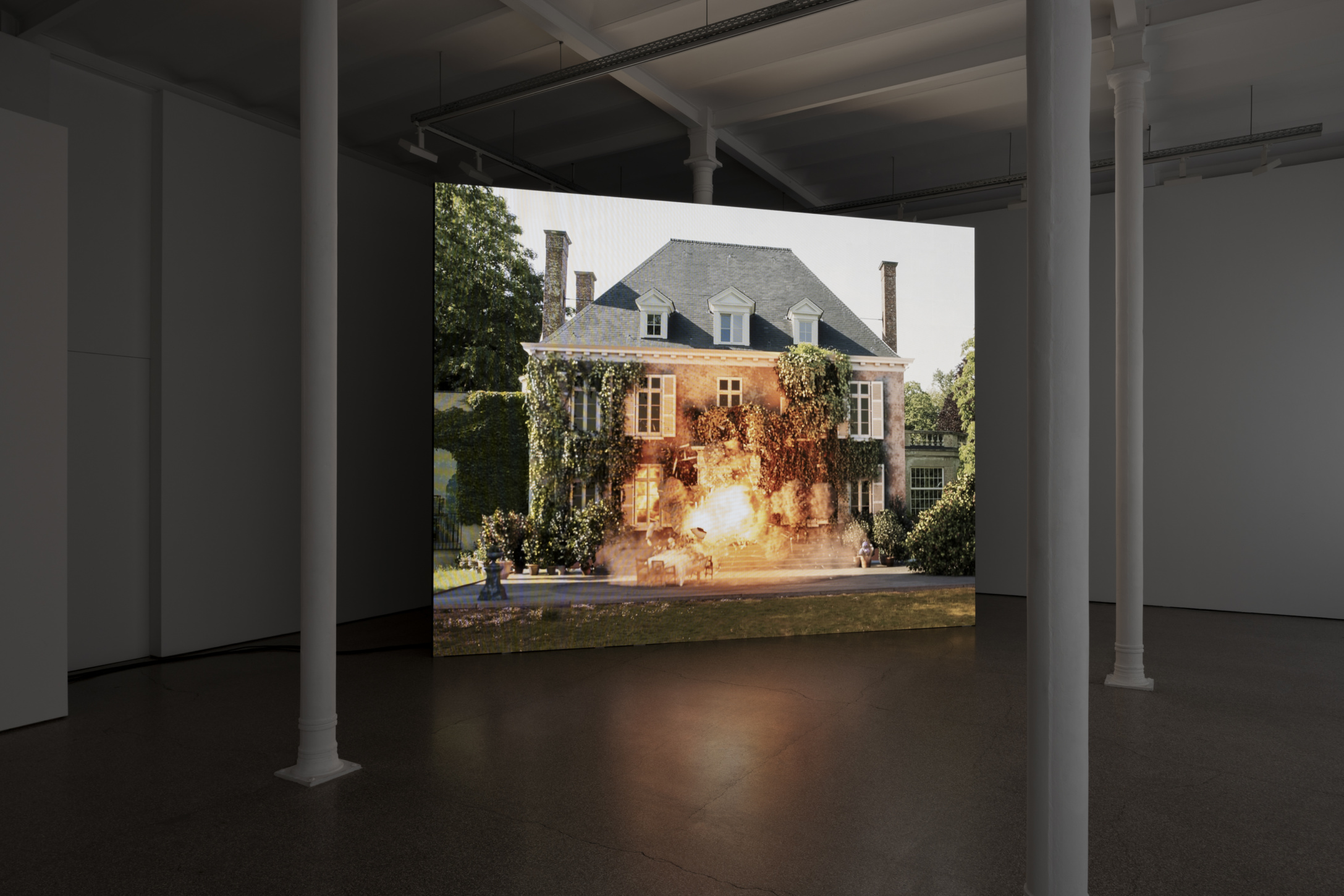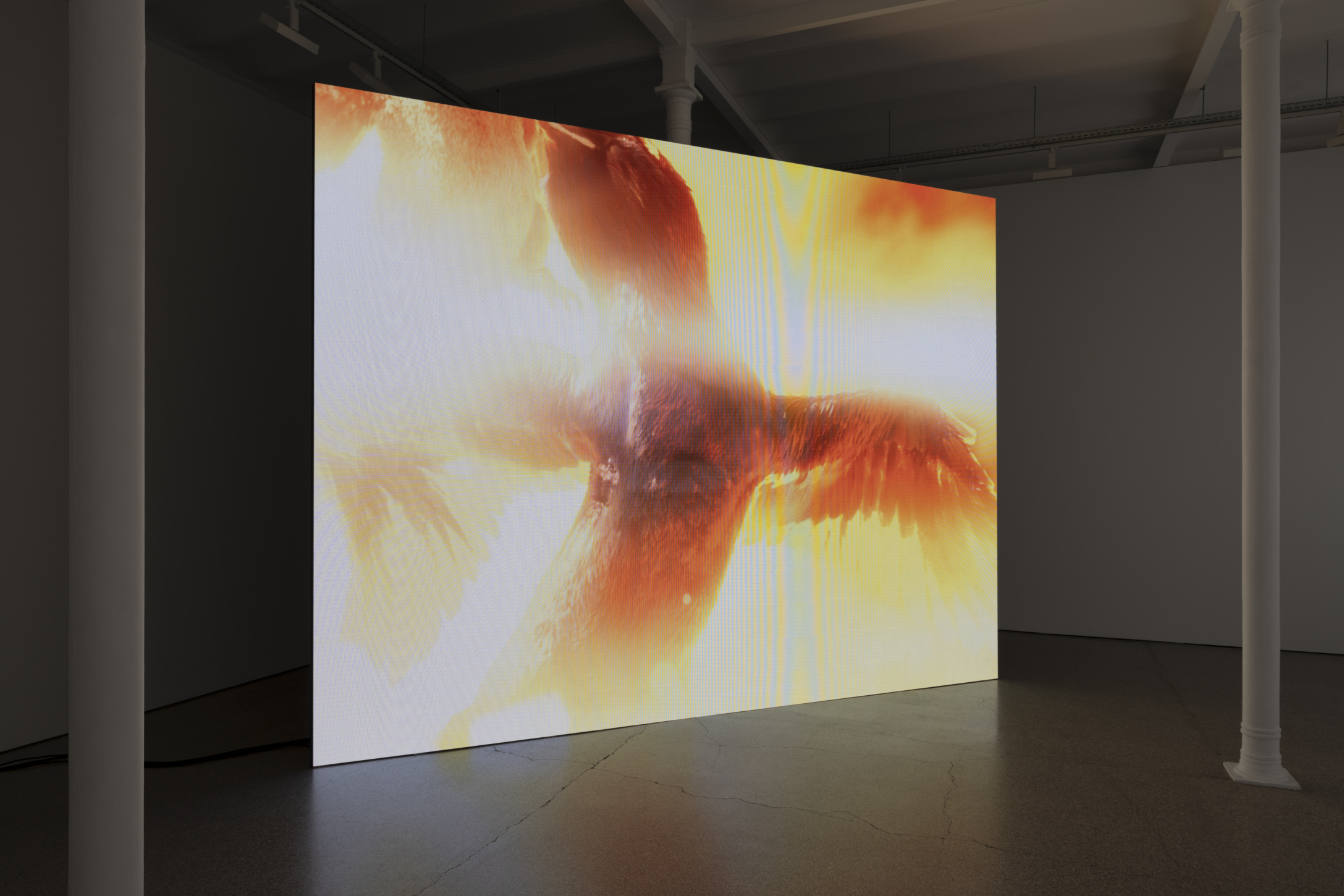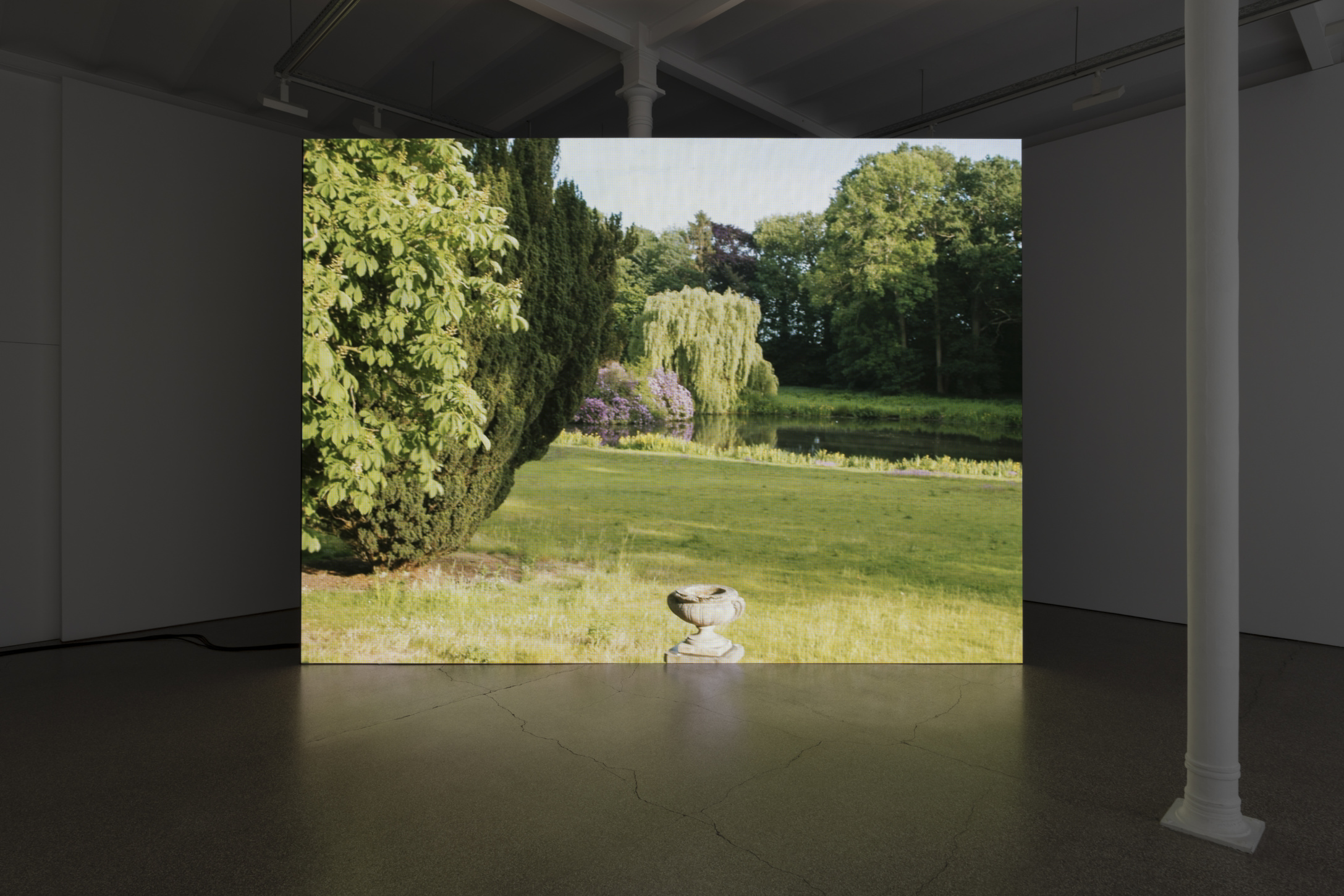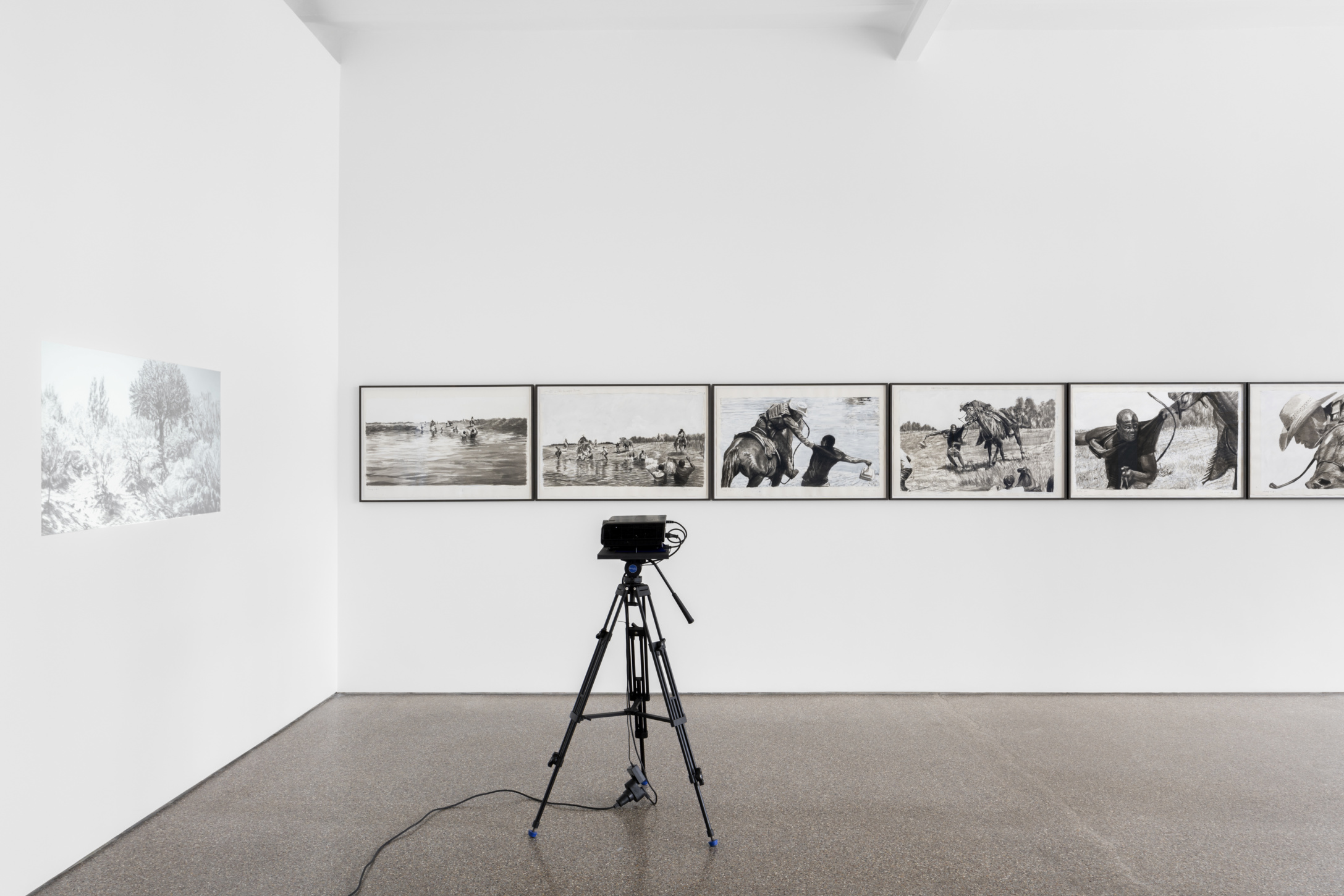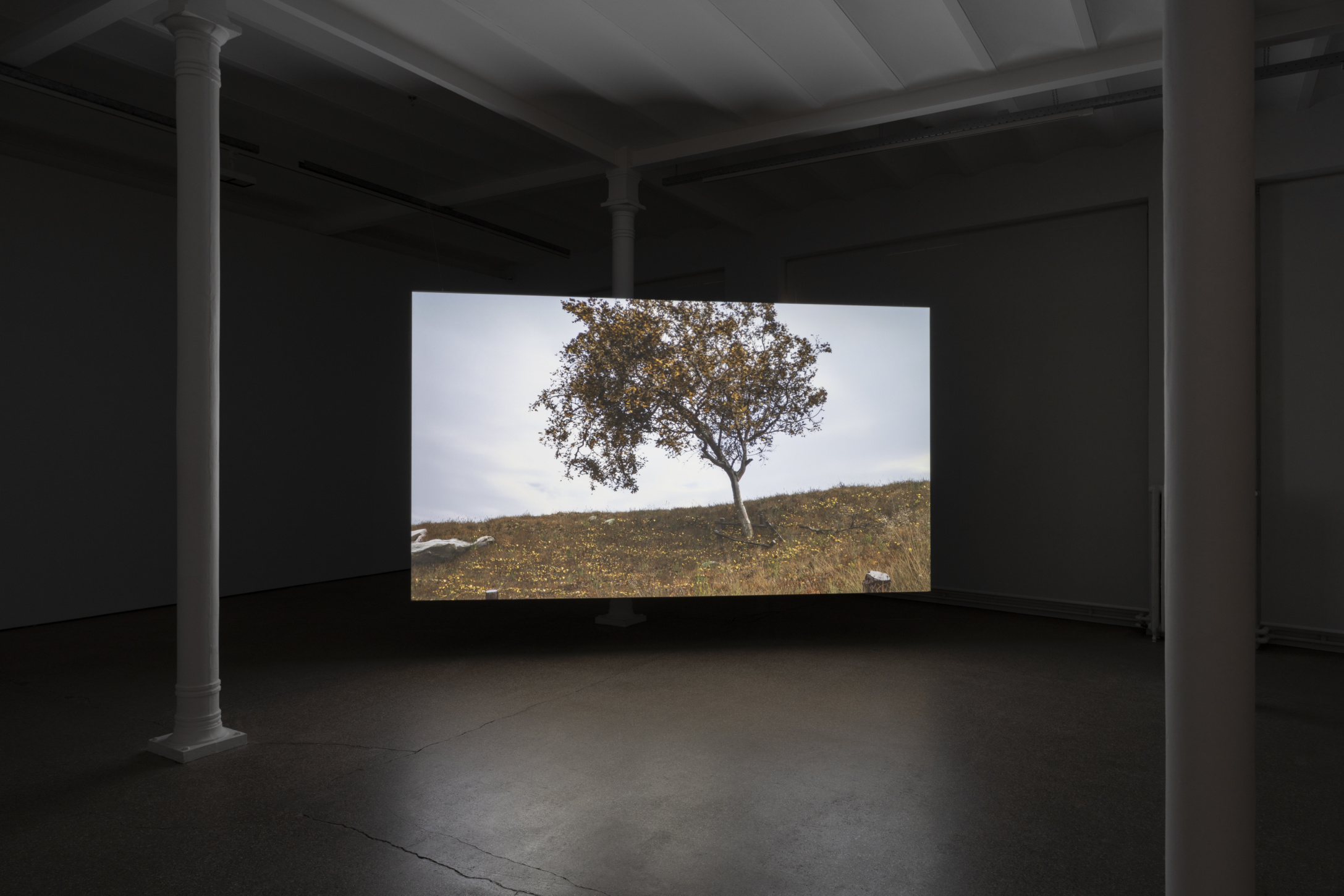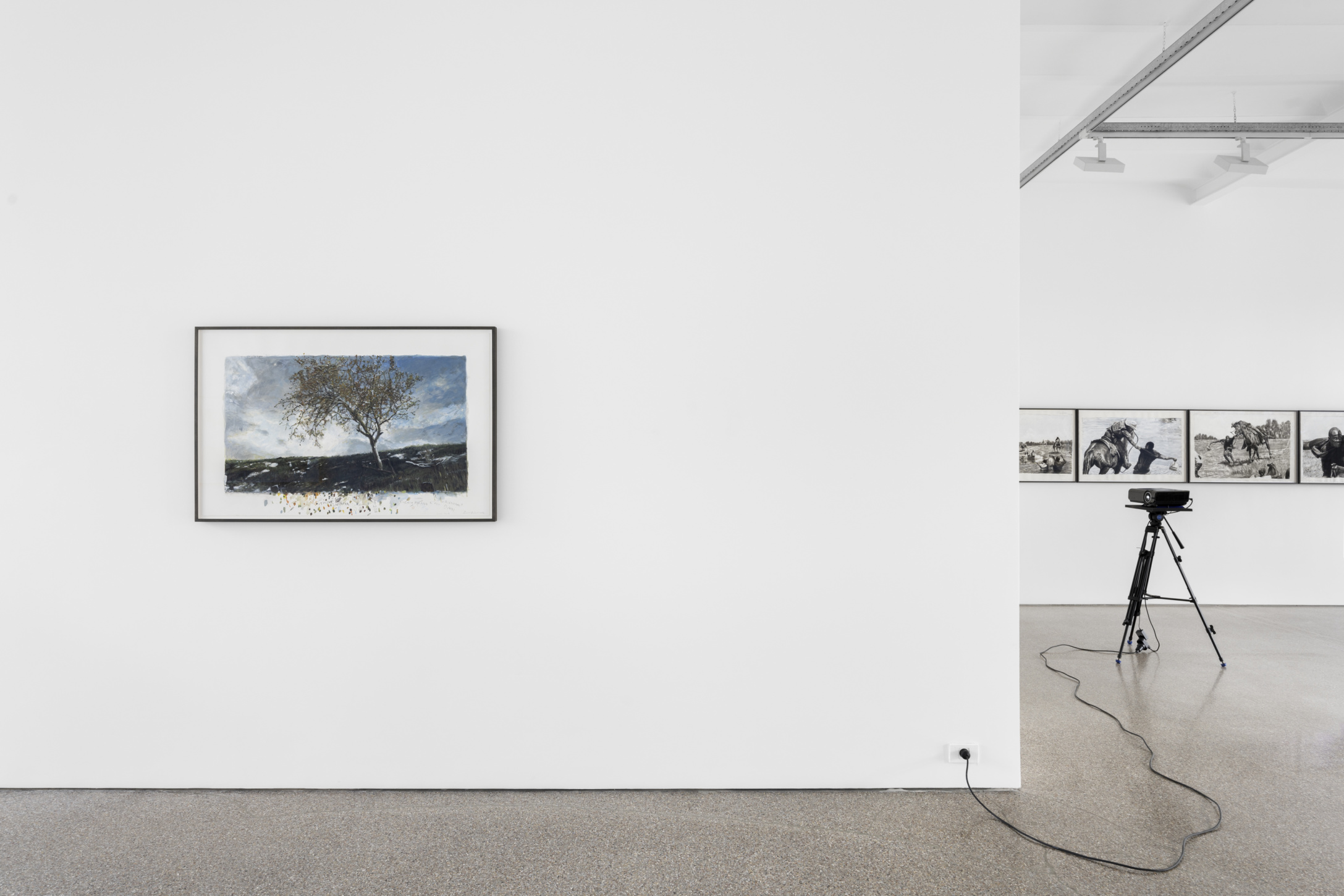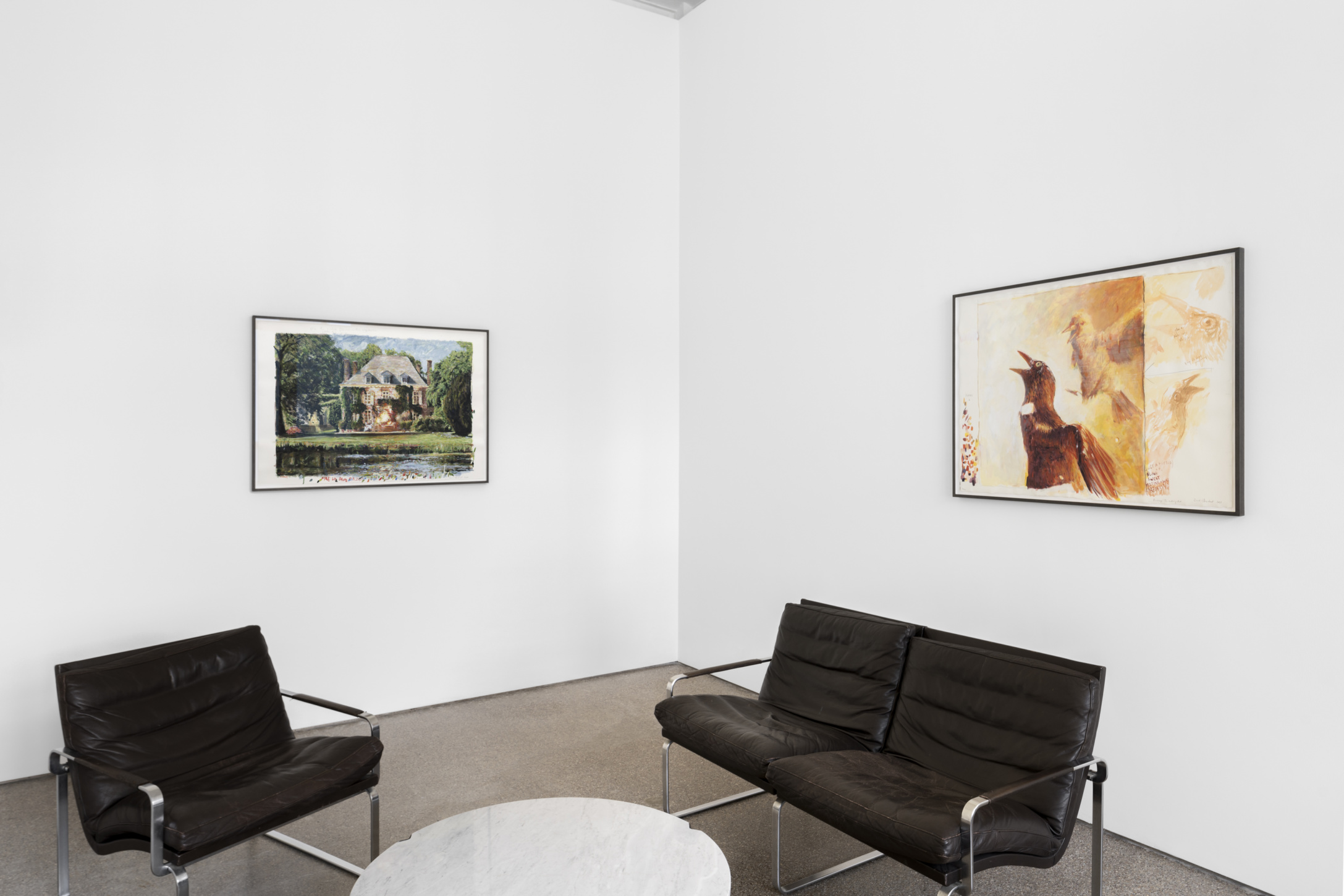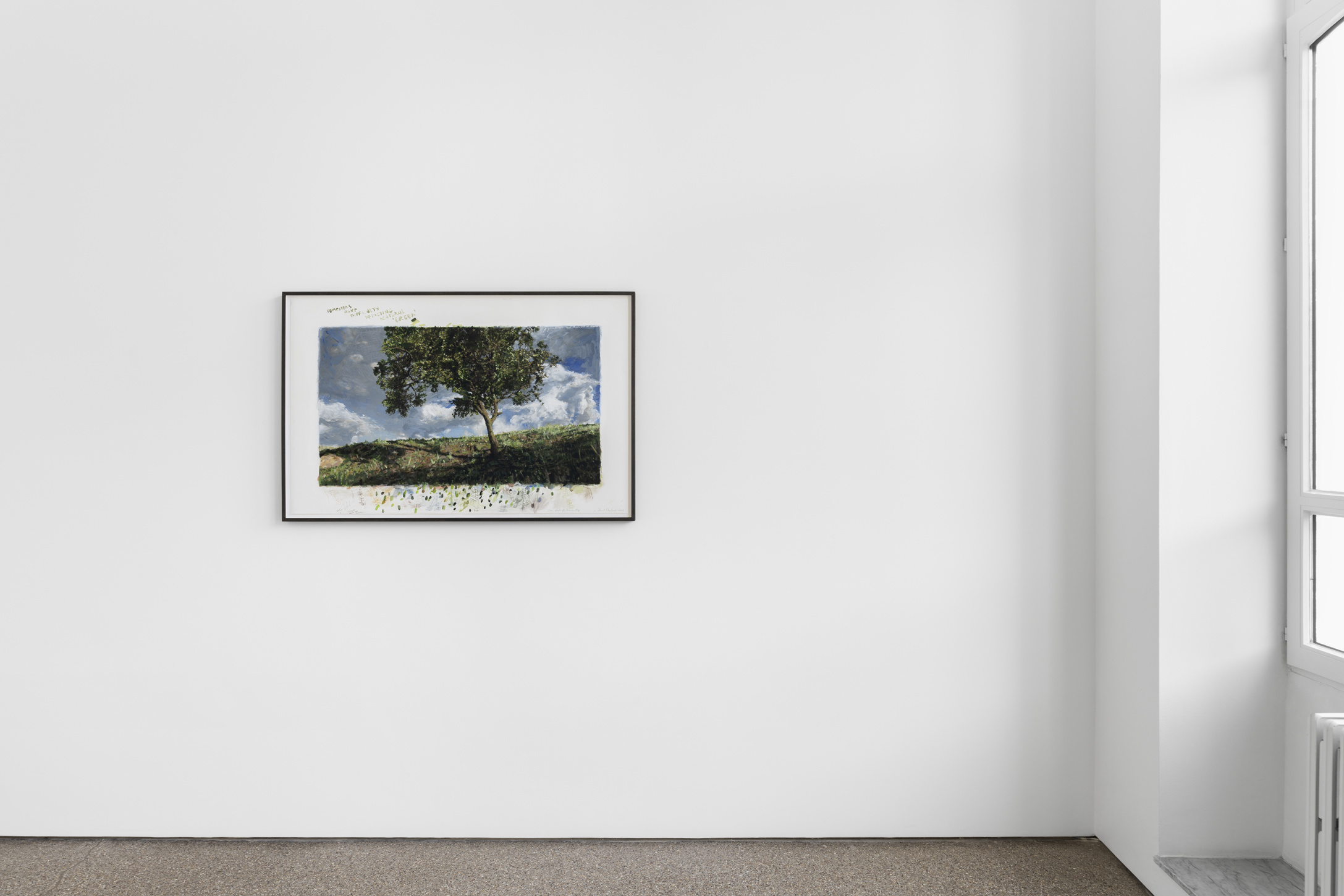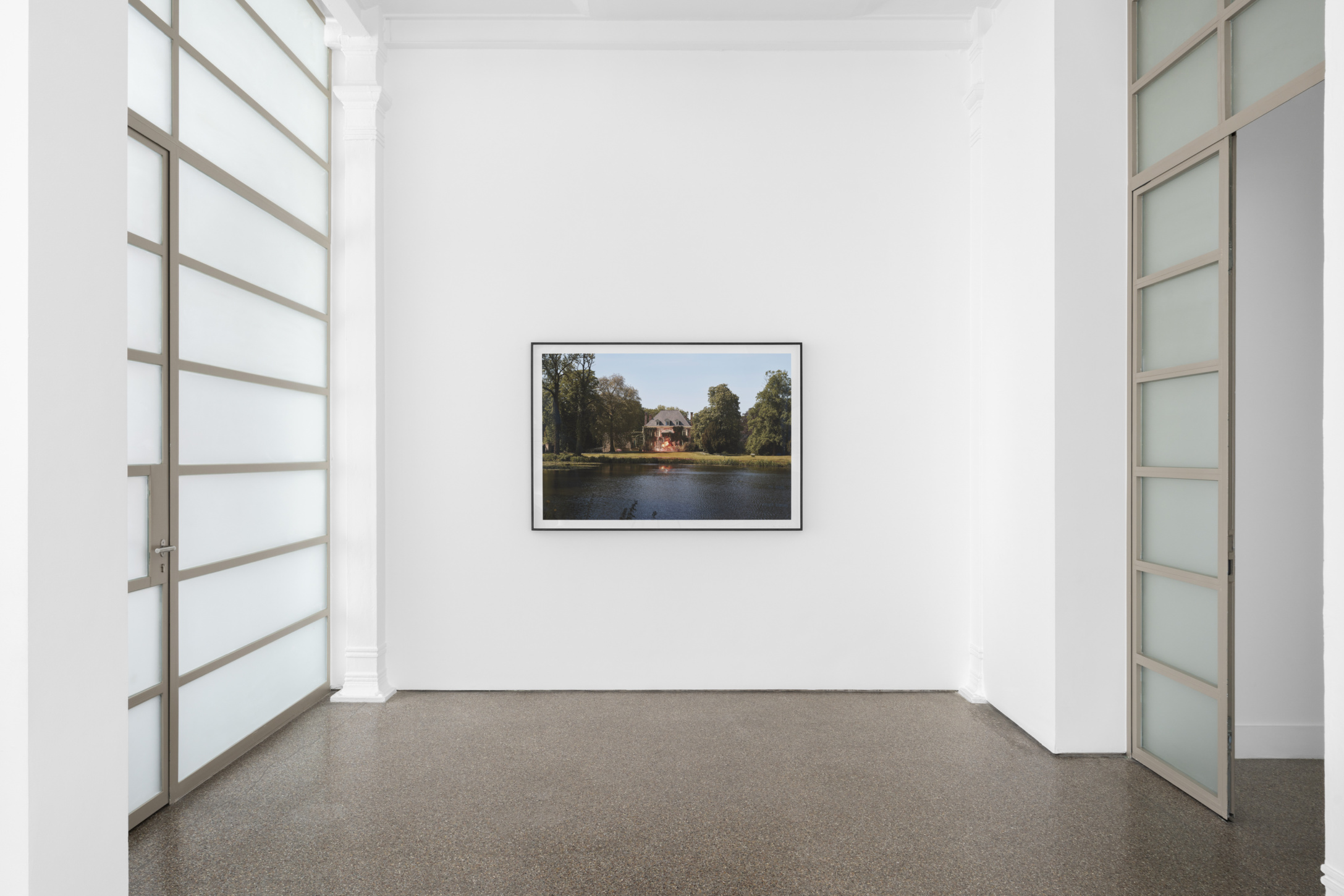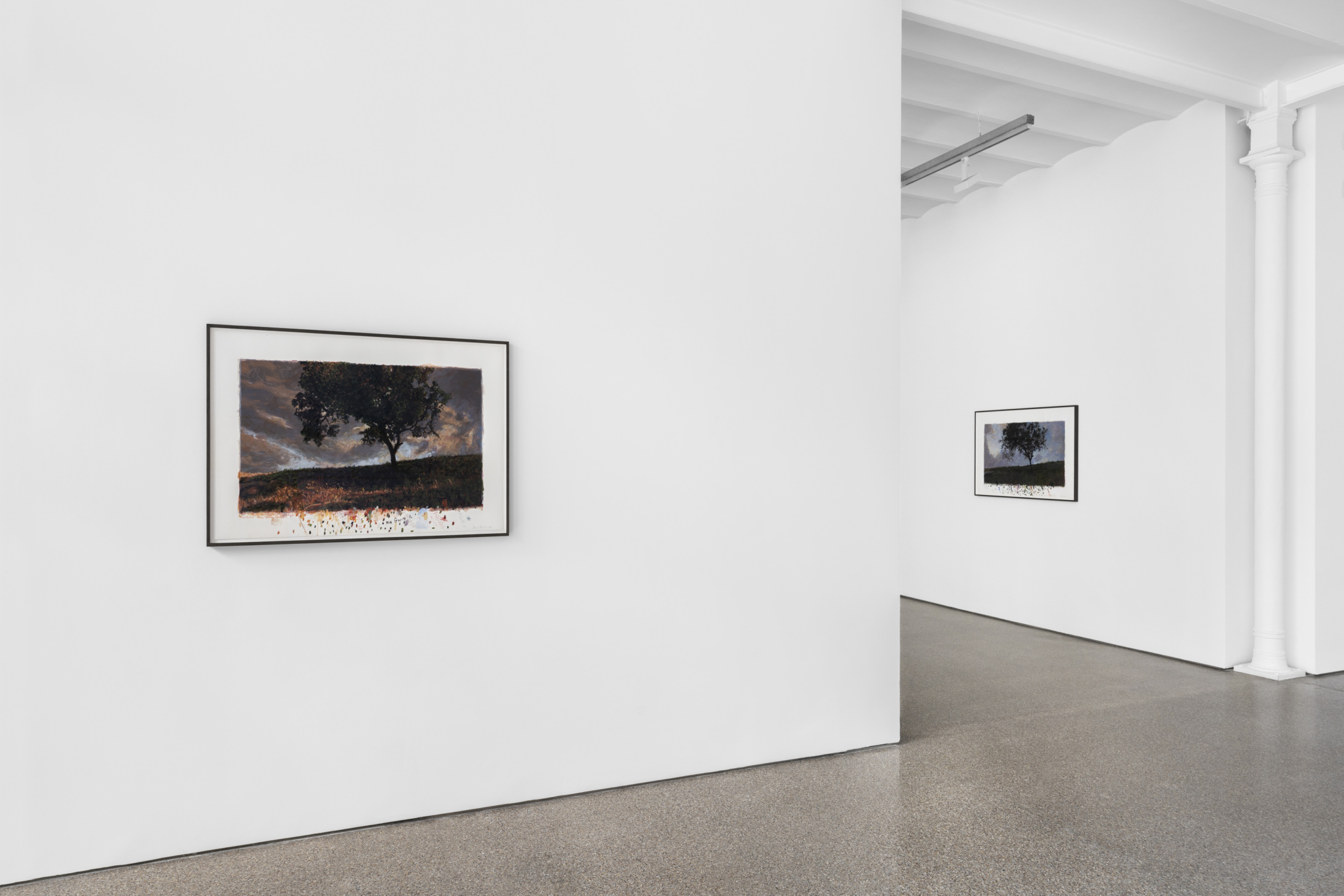Galerie Greta Meert is pleased to present its first collaboration with Belgian artist David Claerbout. Birdsong is the title of this solo exhibition, spread over three floors of the gallery, showing the distinctive facets of Claerbout’s practice.
Entering the ground-floor space, we are blown away by the intensity of shimmering colour in the work Birdcage (2023, single channel video, stereo audio, 1h36). We are witness to the disruption of a picturesque, tranquil garden park in full bloom by an explosion. The distended shot of the eruption is reduced to a purely visual experience by the absence of the anticipated bang, this void both unsettling and comforting to the viewer.
Not without hint to René Magritte’s Empire des Lumières (Empire of Lights), a substantial series of paintings depicting paradoxical images of an evening landscape with a sunlit sky, Claerbout emphasises here how mankind actively constructs the world it inhabits – attention has the power to alter whatever it meets. A primary element within David Claerbout’s oeuvre is the reversal of the foreground / background relationship, how changing our focus of attention can alter our experience of the world. In line with Claerbout’s ideas on anti-anthropocentrism, the Glossy Starling and the Song Thrush are given a central role, with a strong focus on the change in aura they undergo in panicked states, from a register of lightness to an expressionistic portrait of fear. As we witness the gradual exchange of the energetic qualities of violence and peace, Birdcage explores how memory completes our visual perception, manifesting that the human subject is, in essence, time.
The focus on the periphery takes us from a rather lyrical context, to a compelling state of tension, all supported by means of a very painterly approach, a pictorial quality that is clearly continued throughout the exhibition.
For instance, Backwards Growing Tree (2023, Single channel video, stereo audio, 5 years) shows us a digital rendering of a solitary tree in the countryside near Salsomaggiore Terme (Parma region, Italy). Entirely digital, and thus paradoxically handmade, the tree is tracked over a 5-year time span. Starting from an attempt to counter the linear aspect of time, Backwards Growing Tree shows us clock time in a mirror. All natural processes run completely in reverse, however this does not result in an immediate experience – with the naked eye it is impossible for us to perceive real-time natural processes in reverse. A blind spot in our perception is revealed. It is only through a more contemplative involvement of the viewer that the film reveals its true nature. The intimate, revelatory aspect here is literally in the temporal dimension, where the tree’s decline to a more youthful state conceptually challenges us to reflect on notions of disappearance and loss.
On the second floor, we find works on paper that are in direct relation to Backwards Growing Tree and Birdcage, elaborate studies that support the video work, dissecting and providing insight to both artist and viewer. These pieces reaffirm the painterly nature, through its graphic qualities, the keys and layering in technique creating a rich depth where the viewer is led astray. Also shown in the same space is Texas Border Piece (2023), a series of nine works on paper, worked entirely in greyscale and concluding with a small-scale projection, a stop motion built from the drawings themselves. This series captures a fraught moment on the Texas/ Mexico border, where rangers from the US Border Patrol intercept Haitians trying to cross the Rio Grande to reach the USA. The violent resistance of the rangers on horseback underlines the stark contrast to the rather unsuspecting intentions of the families who only see their misfortune escalating.
When David Claerbout laid eyes on press photos of this event in 2022, he was struck by the faux-pictorial style, which was in stark contrast to the horror of the incident and the conventions of photojournalism. The accompanying film projection shows us a somewhat discomforting transition in our focus from the brutal confrontation to the tranquil embrace of nature. Symbolising the destination and aspiration of the refugees, as it were, the motif of the tree forges a unity in space that dissolves the spatial division between the left and right banks of the river and its political equivalent.
David Claerbout’s work is included in major public collections, including: Centre Georges Pompidou, Paris; Pinakothek der Moderne, Munich; Art Gallery of Ontario, Toronto; The Museum of Contemporary Art, Los Angeles; Walker Art Center, Minneapolis; Hirshhorn Museum and Sculpture Garden, Washington D.C.; S.M.A.K, Ghent; The Margulies Collection, Miami; Walker Art Center, Minneapolis; Collection François Pinault; FRAC Nord Pas de Calais; Galerie Neue Meister, Dresden; GAM Galleria D’Arte Moderna et Contemporanea, Turin; …
He has been the subject of numerous international solo exhibitions, including recently: Out of the box – 20 years of Schaulager, Basel, Switzerland (2023); Meditation in Peace. Meditation in Pieces, Taipei Fine Arts Museum (2023); The Close, Milwaukee Art Museum, USA (2022); Unseen Sound, Garage Museum of Contemporary Art, Moscow, Russia (2021); Kunstmuseum Basel Gegenwart, Switzerland (2020); Kunstmuseum Winterthur, Switzerland (2020); Galerie Rudolfinum, Prague, Czech Republic (2020); The Pure Necessity, Parasol Unit in Zuoz, Switzerland (2019); Kunsthaus Bregenz, Austria (2018); Talbot Rice Gallery, University of Edinburgh, Scotland (2018); Schaulager, Basel, Switzerland (2017); FUTURE, De Pont, Tilburg, the Netherlands (2016);…
David Claerbout lives and works in Antwerp.

